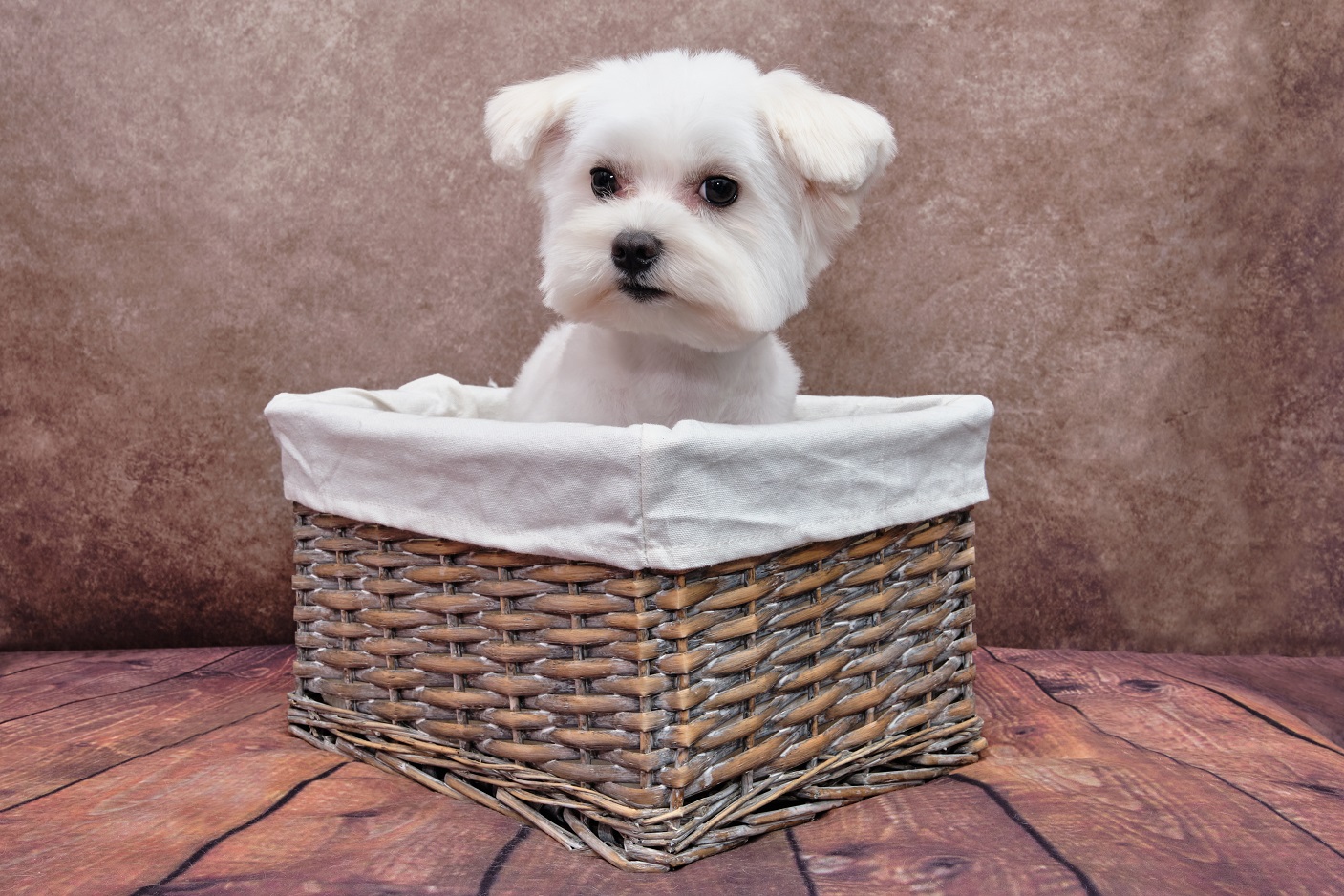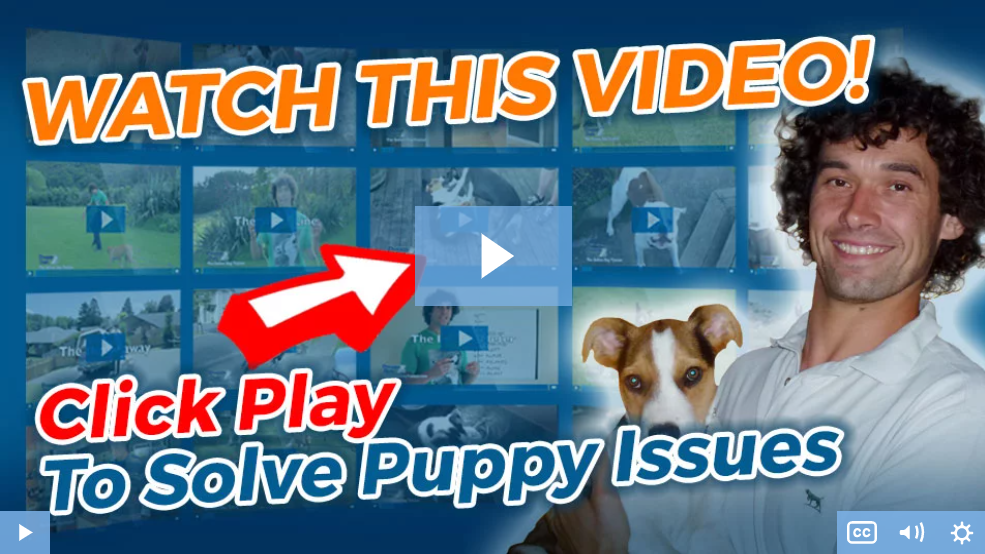If your up late at night googling ‘my puppy hates a crate,’ then don’t worry; you’re not the only one.
Because while the crate can be immensely beneficial for a number of reasons, the fact remains it’s not every puppy will take to it like a duck to water.
In fact, more often than not, there can be a whole host of reasons for crate refusal. And while some might be more problematic than others, it’s by no means impossible to get the situation under control and have a happy, well-adjusted pup who loves nothing more than to snooze all day long in their own little sanctuary. (i.e, the crate)
Now, whether you’re a new puppy owner or you have experience dealing with countless pups. You still need to understand that each one is unique and comes with their own set of challenges.
They all have different personalities, fears, and, more importantly, needs. So you’ll need to tread carefully depending on the severity of your pup’s crating issues to find an effective solution to deal with it accordingly.
So how exactly do you accomplish this?
Well, the first step is simply to teach your puppy the power of calm.
Why?
Because a pup who knows how to control their emotions will be much more likely to stay relaxed and content when the occasion calls for it.
Basically, they’ll be able to tolerate the crate without kicking up a fuss.
So before you do anything else, I’d highly recommend taking a few minutes to check out the 5 step-by-step calming exercises from Dan Abdelnoor all over at The Online Dog Trainer. (see video below)
Not only will these exercises help your puppy remain calm and in control. They’ll also teach your puppy to become highly responsive and obedient both in and around a crate.
These exercises won’t do all the hard work for you. But I guarantee that if you both watch the video and apply the exercises consistently, you’ll be well on your way to changing your puppy’s attitude towards the crate for the better.
Anyway, here’s the link to take a look: 5 Step-By-Step Calming Exercises To Make Your Puppy Highly Responsive, Relaxed, And Ready For Crate Training…
(video will open in a new window)
Why Does My Puppy Hate The Crate?
While it might be ideal to simply lock your puppy away in the crate and go about business for the next few hours. The truth is that crate training a puppy takes time, patience, and consistency.
It usually isn’t something they’ll just ‘get the hang of.’
Basically, you need to first educate yourself on the process of crate training before assuming you can shut the crate door and leave them be.
So with that said, I think it’s first important to highlight some of the more common reasons your puppy doesn’t like the crate. Before giving you a few tried and tested solutions to get them accustomed to their newfound sleeping spot without wanting to run a mile.
So pay attention to the following…
Boredom
We all get bored from time to time, and puppies are no different.
In fact, this goes double for puppies compared to more mature adult dogs as puppies often have boundless energy that simply can’t be matched by their older, adult counterparts.
The best way to release all this energy? …exercise.
See, a pup who has had all of their physical and mental needs taken care of is a lot more likely to be happy and content in their crate than a puppy that has gone without.
How much is enough?
Well, depending on the breed of your pup, they’ll likely have different exercise needs.
And although this can vary depending on many factors, you’ll ideally want to get at least 60-90 minutes of physical exercise into their routine every day.
For working breeds like Border Collies, you could even up this figure to two hours or more depending on their energy levels.
This can be broken up into a few short walks, a run around the garden, or even a simple game of fetch or tug-of-war should do the trick.
Honestly, it’s more about what your pup enjoys more than anything else, so be sure to keep a mental note of what your pup likes to do but, more importantly, what tires them out at the end of it.
In addition to this, it’s also widely recommended to take care of their mental needs as well as physical. You’d be surprised just how much a little bit of mental stimulation can tire your puppy’s brain. Leaving them well and truly pooped before getting ready to settle down.
If you need some mentally stimulating activities, I highly recommend checking out the Brain Training For Dogs Program by Adrienne Farricelli.
In short, this unique program will give you all the games, tips, tricks, and teachings you could ever want to keep your puppy mentally exhausted and ready to give the crate another chance.
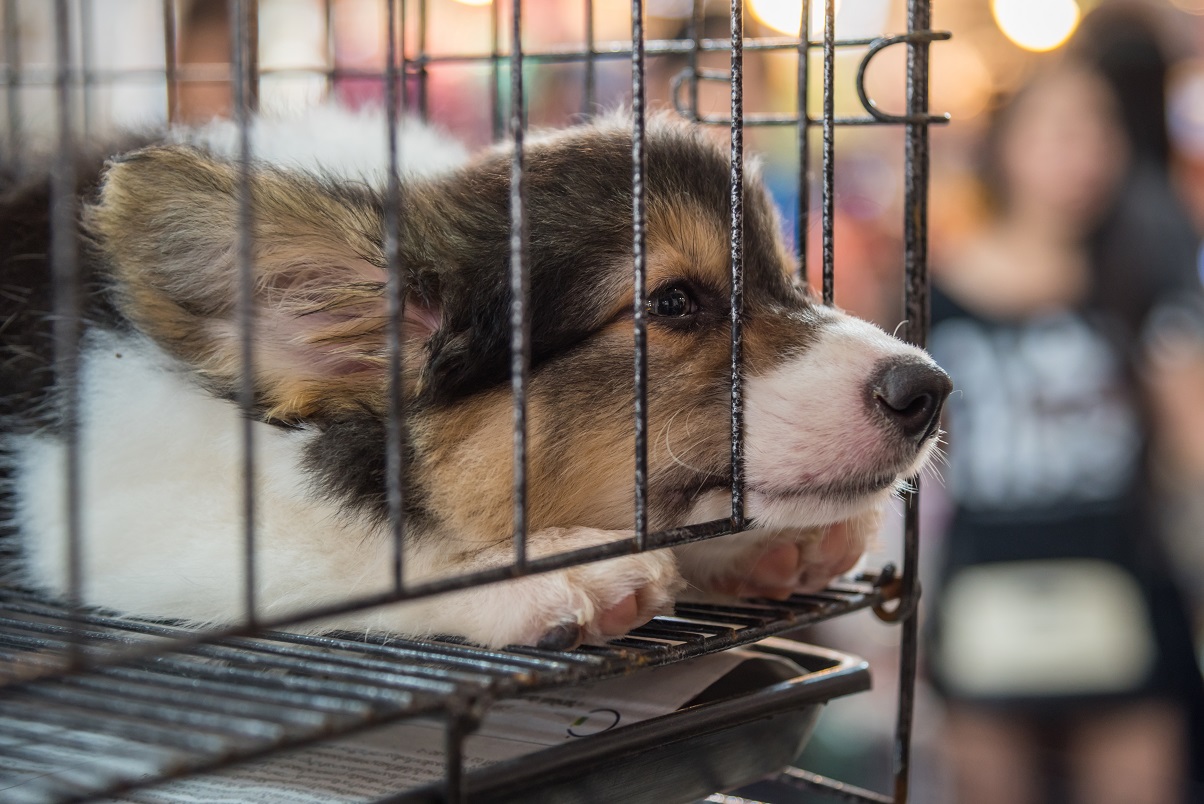
Unfamiliarity
Imagine being locked in a new strange room for hours on end with no explanation, no warning, and nothing to do except stare into space and wonder what the hell happened.
Doesn’t sound ideal, does it?
But believe it or not, this is exactly what your puppy experiences their first time in the crate.
You need to understand that most puppies can’t be left alone for any length of time without first building up the tolerance to the crate along with positive associations to go with it.
And without first learning what it’s for and why they’re in it, they’re likely to rebel.
Separation Anxiety
For some puppies, being left alone in the crate is their idea of heaven. Their own little sanctuary where they can chill, unwind, and get some much-needed rest.
On the flip side, other puppies can see it as an impending nightmare from which there is no escape, especially if you own a pup who is prone to separation anxiety.
Now, just to give you a little insight, you can usually spot the signs of separation anxiety by simply monitoring your puppy’s body language when they’re both in and around the crate.
For instance, if you notice your puppy looking genuinely afraid, shaking, or barking obsessively in the crate until you return. Then you’re dealing with a clear-cut case of separation anxiety.
In severe cases, it’s not uncommon for your pup to destroy the crate, or worse still, eliminate everywhere due to the extreme stress they are put under when they’re contained.
Just to be clear, if you spot any of these signs, get them out immediately before the situation escalates beyond repair. And whatever you do, don’t attempt to reintroduce them until your confident they’ll be able to handle it.
Related Post: How To Calm A Dog With Separation Anxiety In 3 Simple Steps
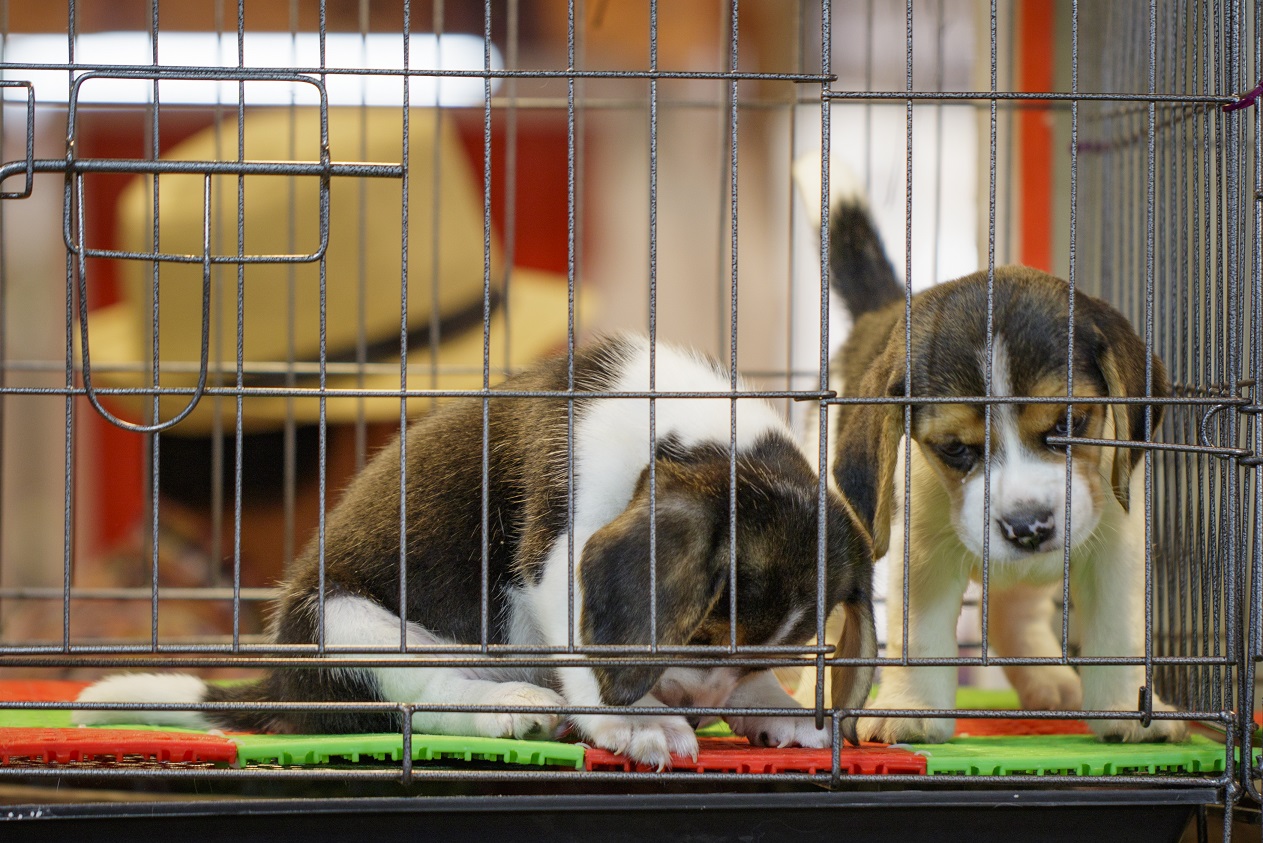
The Right Way To Train A Puppy That Hates The Crate
Just because your puppy hates the crate now doesn’t mean it always has to be that way.
Yes, some pups will have a tougher time than others getting used to the idea, but does that mean you should give up on the crate completely and consider alternatives.
In a word, No!
See, even though your pup might hate the crate now, there’s no denying the immense benefits it can provide once your pup gets used to it.
So to get the ball rolling and teach your puppy to love the crate rather than resent it, go ahead and familiarize yourself with the following…
Figure Out Why They Hate The Crate
Before you do anything else, the first task is to discover why your puppy hates the crate.
Because although there might be a valid reason for crate refusal, sometimes it can be the smallest things that seem to set your pup on edge.
So take a minute to consider the following…
- Do they need the bathroom?
- Are they hungry?
- Is the crate comfortable? (warm blankets etc…)
- Is the crate located in a room with a reasonable temperature? (not too hot or too cold)
- Are there toys and/or games to keep your pup occupied in the crate if they get bored?
- Has your pup been exercised? (are they relaxed, content, and ready for a little chill time)
It might be a little painstaking to consider all of the above. But more often than not, these seemingly insignificant things can ultimately be the difference between a puppy who loves the crate…
…Or views it as the enemy.
If you’ve taken care of all of their needs, and you’re still having no luck. It’s time to explore other measures.
Related Post: How To Plan An Effective Crate Training Schedule For A Puppy
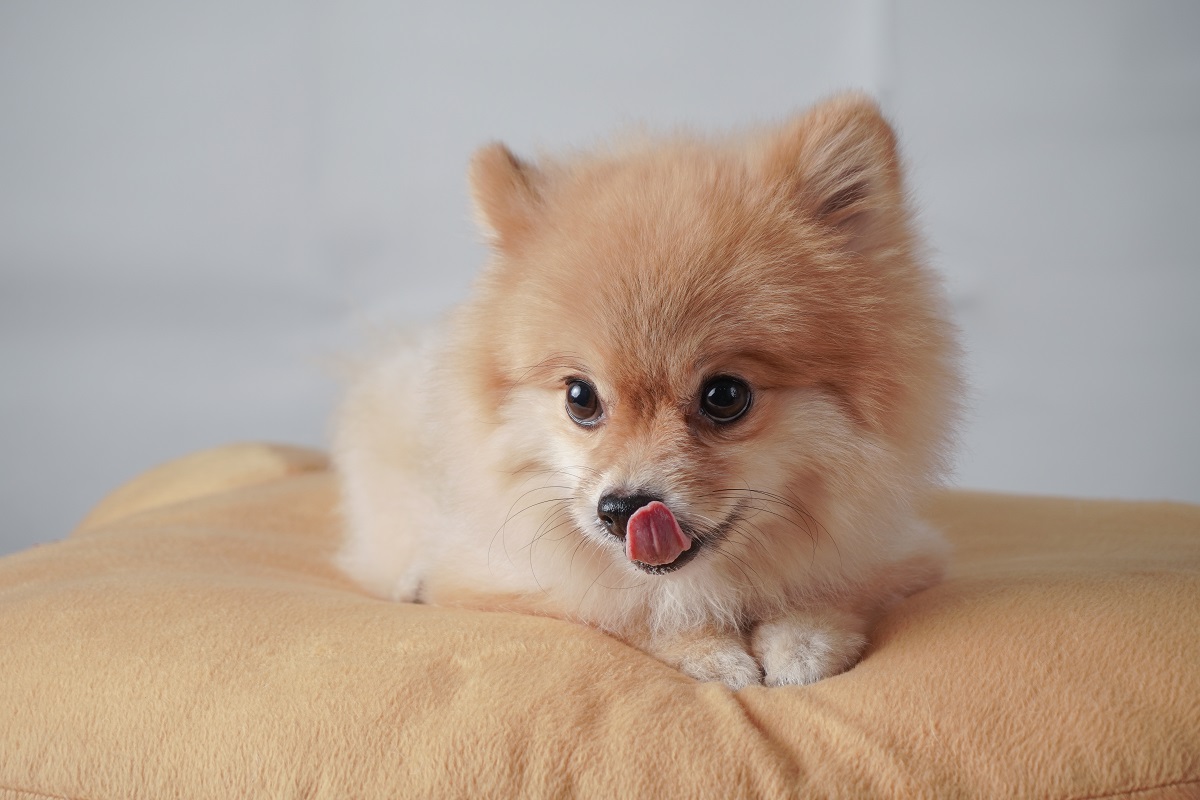
Create Positive Associations With The Crate
The idea behind creating positive associations with the crates is basically to get your puppy to associate good things happening when they’re inside.
For instance, if your puppy knew for a fact that they were going to be rewarded with positive praise, attention, and maybe even a few treats every time they set paw in the crate. My guess would be that they’d be a lot more likely to settle.
So here’s what you need to do to make this happen…
First, get a bag full of your pup’s preferred treats or snacks to hand and set aside a little time to simply play with your pup near the crate.
For now, the plan isn’t to lock your puppy away and leave them to their own devices. It’s just about getting them used to good things happening when they are near it.
So for starters, make sure the crate looks incredibly inviting by filling it with soft blankets, toys, and maybe even a few treats for good measure.
Next, go ahead and toss a treat a few feet from the crate door to see if your pup goes for it.
If they do great, keep repeating the same process making sure you toss treats further inside the crate each time.
Again, keep the door open so you don’t alarm your puppy. But do your best to make them feel safe once inside.
The idea behind this is to replace any negative associations they previously had with new positive associations.
And while this can take several attempts and a fair few days of consistent effort to see results. In time your puppy’s previous convictions with the crate will start to become a thing of the past.
Once they’re comfortable inside the crate, the next step is to gently shut the door and see how they react.
When you do, it’s important to monitor your puppy’s body language and look out for any signs of fear, anxiety, or a desperate need to escape.
If they look at all uncomfortable or stressed, open the crate door and attempt this step again at a later date.
Again, this can take a lot of patience, but eventually, your pup should start to feel comfortable with the crate door closed.
Now the last step (and you need to be careful here) is to give your pup a little space by distancing yourself or even leaving the room entirely for a few minutes to see how they cope.
I won’t lie. It can be relatively difficult to implement this last step. This is why it’s always beneficial to make sure your puppy’s physical needs (exercise) and mental needs (toys, games, etc.) are met before closing the crate door.
It sounds ridiculously simple, I know. But you’d be surprised at how effective a little exercise and one or two chew toys can make all the difference when it comes to taking your puppy’s attention away from what’s going on around them.
Apply A Little Calm
To double down on your efforts to get your pup used to the crate, I can’t stress enough how important it is for them to be in control of their emotional state.
I know we discussed this briefly a little earlier in this post, but if you haven’t done so already, now would be the time to take a look at the 5 step-by-step calming exercises.
Implementing them once or twice should be enough to temporarily calm your pup. But if you want to see lasting changes in their ability to remain cool as a cucumber when inside the crate, you really need to apply them daily.
If you do, I have no doubt your pup will have no trouble adjusting.
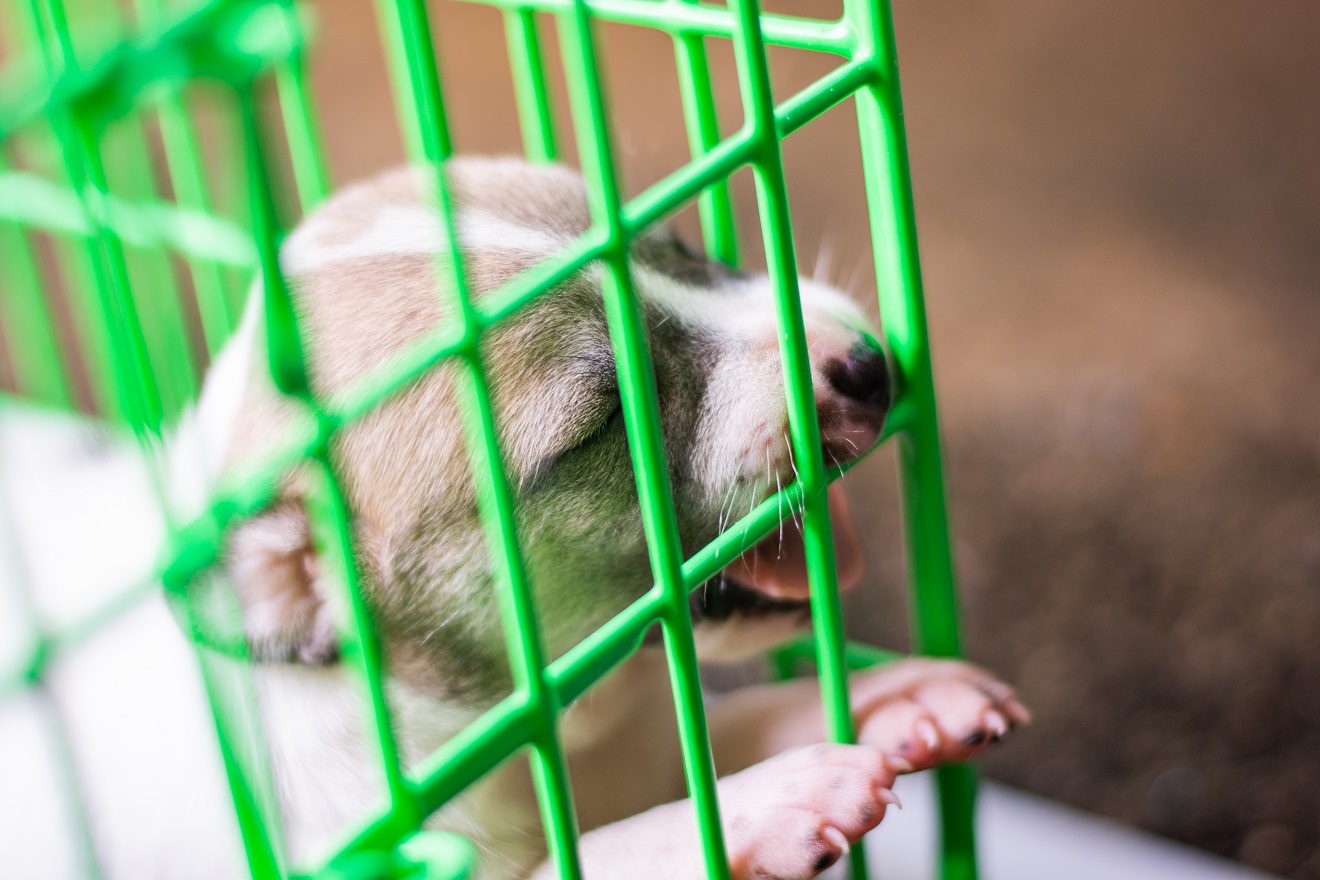
Wrapping Things Up
Like anything puppy-related, I think the take-home message is that time, consistency, and an effective plan of action will get the job done.
The reality is that you can’t expect miracles overnight, and while some pups will adjust quicker than others. There will be occasions where you have to stick it out for the long haul.
But as long as your patient, consistent, and work with your puppy regularly. Their attitude towards the crate will change for the better.
